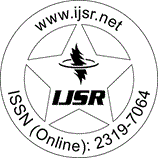Downloads: 5
India | Biochemistry Science | Volume 14 Issue 8, August 2025 | Pages: 684 - 702
The Efficacy of Glycated Hba1c in Diagnosis of Type 2 Diabetes Mellitus and their Association with Dyslipedemia
Abstract: Hemoglobin A1C (HbA1c) has been widely recognized and used as a reliable test for monitoring glycemic control in diabetic patients for around three decades. It offers an estimation of the average blood glucose levels over the past 8-12 weeks. Despite advancements in the development of antidiabetic medications, maintaining optimal glycemic control remains a challenging task. The main objective of the present study was to evaluate the diagnostic value of HbA1c in predicting the presence of dyslipidemia in patients diagnosed with type 2 diabetes. In the current study, a total of 60 participants diagnosed with type 2 diabetes were included. The assessment involved measuring HbA1c levels, fasting blood glucose, and lipid profiles. The mean HbA1c value for males was 7.35±2.31, while for females, it was 9.18±2.59. Based on their glycemic index, the diabetic patients were categorized into two groups: group 1 with HbA1c ≥7.0% and group 2 with HbA1c ?7.0%. The results revealed a positive correlation between HbA1c levels and lipid parameters, while a negative correlation was observed between HbA1c and HDL cholesterol. Patients in group 1 (diabetic dyslipidemia) exhibited significantly elevated levels of triglycerides, total cholesterol, LDL cholesterol, and fasting blood glucose compared to those in group 2 (good glycemic control). The mean HbA1c value in the diabetic dyslipidemia group was 9.47±2.46, significantly higher than the mean HbA1c of 6.52±0.12 in the group with good glycemic control. Furthermore, the mean triglyceride level in the diabetic dyslipidemia group was 309.27±89.2, whereas in group 2, it was 127.01±37.65. The mean LDL cholesterol in the diabetic dyslipidemia group was 118.12±25.82, compared to 103.8±27.51 in the group with good glycemic control. The mean total cholesterol in group 1 was 215.4±30.78, which was higher than the mean total cholesterol of 165.83±37.3 in group 2. Additionally, the mean HDL cholesterol in the diabetic dyslipidemia group was lower at 39.5±6.84, while in group 2, it was 45.07±7.19. The mean fasting blood glucose in group 1 was higher at 209.26±73.23, whereas group 2 had a mean fasting blood glucose of 115±20.1. These findings indicate that type 2 diabetic patients with dyslipidemia are at an increased risk of cardiovascular diseases. The association between HbA1c and various lipid parameters underscores the importance of achieving good glycemic control to reduce the likelihood of developing diabetic dyslipidemia and other complications associated with diabetes. Monitoring HbA1c levels serves as a convenient, cost-effective, and time-efficient tool for assessing diabetes and its associated dyslipidemia.
Keywords: HbA1c, Type 2 Diabetes Mellitus, Dyslipidemia, Cardiovascular Risk, Lipid Profile
How to Cite?: Muzamil Mustafa Wani, Dr. Saima Mushtaq, Dr. Farhat Abass, "The Efficacy of Glycated Hba1c in Diagnosis of Type 2 Diabetes Mellitus and their Association with Dyslipedemia", Volume 14 Issue 8, August 2025, International Journal of Science and Research (IJSR), Pages: 684-702, https://www.ijsr.net/getabstract.php?paperid=MR25812231703, DOI: https://dx.doi.org/10.21275/MR25812231703
